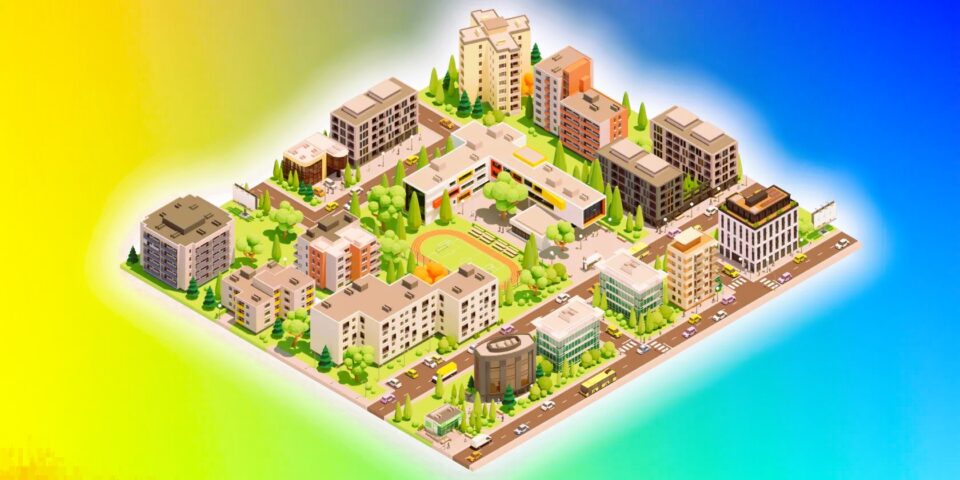The genre of city-building simulations has seen remarkable growth over the years, and among the titans of this category stand two prominent titles: Cities: Skylines and SimCity. Both games have garnered immense popularity, each with its unique approach to urban development. In this comparative analysis, we delve into the intricacies of these virtual worlds, exploring the strengths, weaknesses, and the impact they have had on the gaming landscape.
SimCity: Pioneering the Genre
SimCity, created by Will Wright and first released in 1989, is often regarded as the pioneer of city-building simulations. With its isometric perspective and simplistic yet effective mechanics, SimCity set the foundation for an entire genre. The game challenged players to balance various aspects of city planning, from zoning to infrastructure development, all while managing the city’s budget.
Over the years, SimCity evolved with each iteration, introducing new features and improved graphics. The franchise’s influence extended beyond gaming, with its concepts finding applications in urban planning discussions and educational settings.
Cities: Skylines: A Modern Challenger Emerges

Fast forward to 2015, when Cities: Skylines burst onto the scene, developed by Colossal Order. Recognizing the void left by the perceived shortcomings of the 2013 SimCity release, Cities: Skylines aimed to provide players with a more robust and expansive city-building experience.
Cities: Skylines was praised for its attention to detail, extensive modding support, and a robust simulation engine. The game allowed players unprecedented freedom in city design, with an expansive map, intricate road-building tools, and a more flexible zoning system. The modding community flourished, contributing to the game’s longevity and diversity in gameplay.
Graphics and Aesthetics: Aesthetics vs. Realism
One notable point of comparison between the two games lies in their graphical styles and aesthetics. SimCity has traditionally leaned towards a more stylized, cartoonish approach, with a focus on clarity and simplicity. In contrast, Cities: Skylines opted for a more realistic visual style, capturing the intricacies of city life with detailed models and environments. Mastering the micropolis, read our beginner’s guide to city building strategies.
While SimCity‘s visual design has a timeless charm, Cities: Skylines excels in creating a visually immersive experience. The choice between aesthetics and realism becomes a matter of personal preference, with each game appealing to a different segment of the player base.
Gameplay Mechanics: Simplicity vs. Complexity
One of the fundamental distinctions between Cities: Skylines and SimCity lies in their gameplay mechanics. SimCity has often been praised for its approachable and intuitive design, allowing players to dive into the game without being overwhelmed by complexity. This simplicity, however, comes at the cost of certain depth in simulation.
On the other hand, Cities: Skylines embraces complexity, providing players with a myriad of options for city planning. The game’s traffic simulation, in particular, received acclaim for its realistic portrayal of urban transportation challenges. This depth of simulation appeals to players seeking a more intricate and challenging experience.
City Size and Scale: Expansive vs. Intimate
Another crucial aspect of comparison is the scale of cities that players can build. SimCity has traditionally featured smaller city sizes, emphasizing the need for efficient planning within limited space. This approach contributes to a more intimate and focused gameplay experience.
In contrast, Cities: Skylines boasts expansive maps, allowing players to create sprawling metropolises. The freedom to build large and intricate cities appeals to those who enjoy the macro-management aspects of urban development. The sheer scale of Cities: Skylines provides a sense of grandeur and the ability to create diverse districts within a single city.
Economic Simulations: Budgeting and Challenges
Both games incorporate economic simulations, challenging players to manage budgets, taxes, and various financial aspects of city governance. SimCity tends to present economic challenges in a more streamlined manner, making it accessible to a broader audience.
Cities: Skylines, however, introduces a more detailed economic system. Players must contend with factors such as individual citizen happiness, fluctuating demands for residential, commercial, and industrial zones, and the consequences of taxation policies. This depth adds a layer of realism and complexity to the economic management aspect of the game.
Community and Modding Support: Flourishing Creativity
A vibrant gaming community often contributes significantly to the longevity of a title. Both SimCity and Cities: Skylines have active communities, but the latter stands out for its robust modding support. The Steam Workshop integration allows players to create and share a vast array of mods, ranging from new building assets to gameplay-altering modifications.

SimCity‘s modding community, while present, has not reached the same scale. The modding scene in Cities: Skylines has become a key factor in its enduring popularity, with players able to tailor their gaming experience to their preferences.
Reception and Legacy: Enduring Influence
Reception and legacy play a crucial role in defining the impact of a game on the gaming landscape. SimCity holds a legacy as the trailblazer in the city-building genre, setting the stage for the evolution of the genre over the years. Despite the challenges faced by the 2013 release, the franchise’s influence remains strong.
Cities: Skylines, on the other hand, is often hailed as a modern triumph in the city-building genre. Its success in addressing the desires of a passionate fanbase, coupled with ongoing support and expansions, has secured its place as a definitive title in the genre.
The Divergent Paths of City-Building
In the world of city-building simulations, Cities: Skylines and SimCity have taken divergent paths, each appealing to a distinct set of players. SimCity continues to embody the charm and accessibility that made it a classic, while Cities: Skylines pushes the boundaries of complexity and scale.
The choice between the two ultimately depends on the player’s preferences. Whether you seek the nostalgia of a classic or the innovation of a modern masterpiece, the city-building genre has flourished, thanks to the enduring legacies of SimCity and the dynamic creativity of Cities: Skylines.
For more in-depth information on city-building simulations and gaming standards, you can explore the Cities: Skylines Wiki on Fandom and SimCity Wikipedia page for a comprehensive look at the history, features, and reception of these iconic games. Additionally, IGN provides reviews and insights into the gaming industry, offering a broader perspective on the gaming standards that both Cities: Skylines and SimCity have contributed to over the years.


